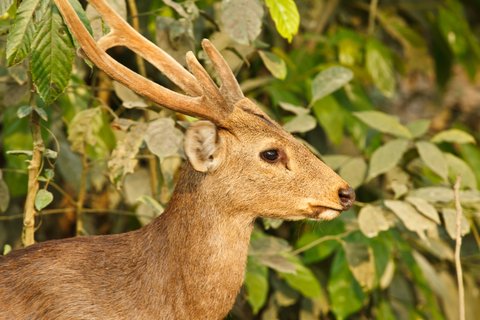I’ve always looked at deer hunting in the traditional sense, or maybe how my ancestors looked at it. If you do your homework, walk slowly and take your time, use the wind, keep in the shadows, and conceal yourself as much as possible, you have a good chance of getting an opportunity at a shot.
It makes a good hunter out of you if you can learn all of these skills and apply them with patience, awareness and a lot of practice. I’ve balked at the idea of using fancy scents or even decoys for years because it seemed a bit like cheating. But I’ve changed my tune lately because of how difficult it is to find deer here in California lately.
So I did a little research on decoys and I was pleasantly surprised at how well they work. There are a few things you need to think about if you’re going to use a deer decoy.
The most important thing to consider when placing your decoy is location. You want it to be seen from far off so deer will be curious and come in and check it out. Usually, when you see deer, they are either feeding, getting water or crossing a ridge to a bed or food supply. There is no advantage in setting up your decoy in the thick woods, no matter how good a spot it is. If it can’t be seen by other deer, it’s useless.
Try to set it so it’s in a high spot. A ridge is a good choice if you find a well-traveled crossing leading to a field. You will often see these heavily traveled game trails along a ridge-line. If you have logging roads nearby, a good choice is to place the decoy where a couple of roads intersect. That way, deer (who often use logging roads for travel) can see it from a few different directions.
The other very important factor to consider is how to position the decoy in comparison to where your stand or blind is. You want to place your decoy upwind of your location. Typically, another buck will come in downwind of it (remember that deer rely on scent primarily) to check it out. This means that the deer coming in will position itself between you and your decoy, giving you a good opportunity for a shot.
Keeping in mind about how deer rely on scent, make darn sure your decoy doesn’t smell like the inside of your truck, your dog or you. Spray it down well with some scent killer. Also, many hunters like to use scents like buck urine (if you’re using a buck decoy) or doe-in-estrus or doe urine if you have a doe decoy. Don’t cover the decoy in deer scent, instead, sprinkle a little on the back legs or on the ground under the decoy.
Another cool trick is to try to get some movement out of your decoy as an added attractant. Some guys cut a strip off a white garbage bag and tape a piece to the ears and one to the tail. They will move around in a slight breeze giving the appearance of a real deer. Another guy suggested tying some fishing line to the tail and run it back to your blind so you can control the tail wag. If you watch deer in the wild, their tails always seem to be moving.
Another important thing to consider is making noise. Some guys just sit there while their decoy does the same. Try some grunting and rattling to get the most out of the experience. I’ve heard that buck decoys work best for attracting bucks (which is all we can hunt here in California) while doe decoys seem to attract a lot of does. That does nothing for the hunter who can only shoot a buck (makes sense to me!)
Like anything else, remember to apply all the rest of your deer hunting skills and you have just given yourself an edge if you have a decoy placed in the right spot. I think I’ll try this next year!









